Dyson Wash G1, pros and cons of a unique wet floor cleaner
True to its belief in creating a device that performs one task best, Dyson has launched Wash G1, its first-floor cleaner. This is an important turning point for the British company, which, after its many electric brush models and two robot hoovers (as well as hair care products, purifiers, fans, and the recent OnTrac headphones), is now entering a new market segment by showcasing its first device that stands on its own.
When you finish washing the floor, the Wash G1 has to be inserted into the base, which allows it to be recharged after inserting the dock. After testing the device, the response is positive, even if there are some limitations compared to other solutions already on the market. But let’s see why by recounting my cleaning experience.
First step
At first impact, the Wash G1 is not light, weighing 4.9 kg. However, bending the blue handle to operate and then putting the device back upright makes washing easier, reducing the weight you feel if you have to carry the device upstairs. When you use it, you immediately realise the difference between Wash G1 and V15s Detect Submarine, the electric broom to which Dyson had added a special brush for washing.
However, if the latter was primarily a device designed for vacuuming, the latest arrival is instead designed to remove wet and dry dirt. Thus, it is the first step in the future that the company wants to devote to washing, as can be seen from the name, where G1 probably indicates the first generation of the floor washer.
I said before that Dyson’s strategy is to produce devices for a single task because several times I was able to speak to the company’s engineers, I was told that combining multiple functionalities depowers the device. However, this is also a deliberate choice to maximise profits because Dyson customers tend to trust the brand and buy different devices for home cleaning. With the Wash G1, it has to be said that suction is of little use, as passing the brush through the cleaner removes dirt instantly, including solid waste, which ends up in a special tray.

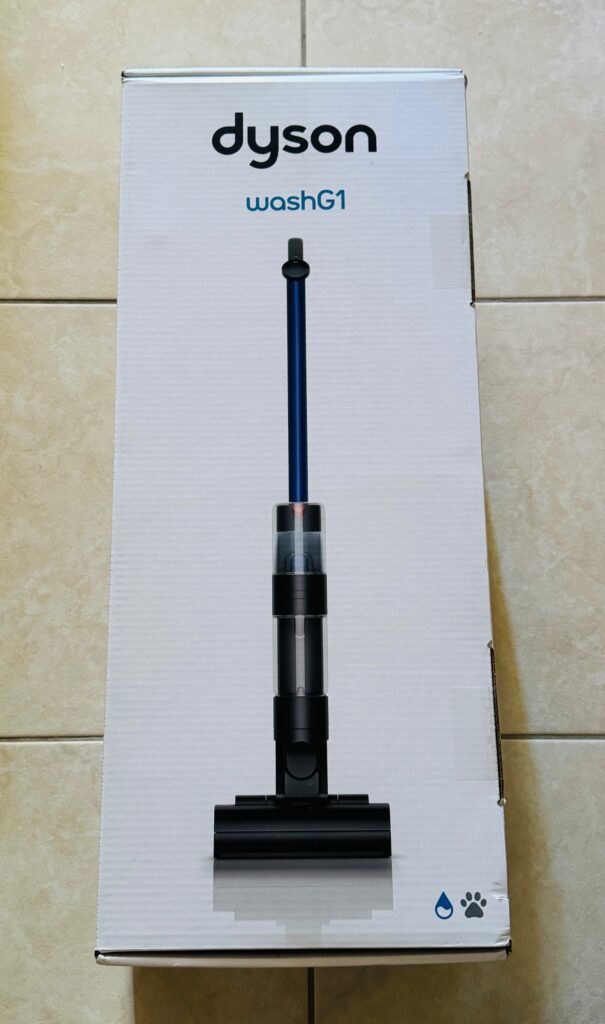
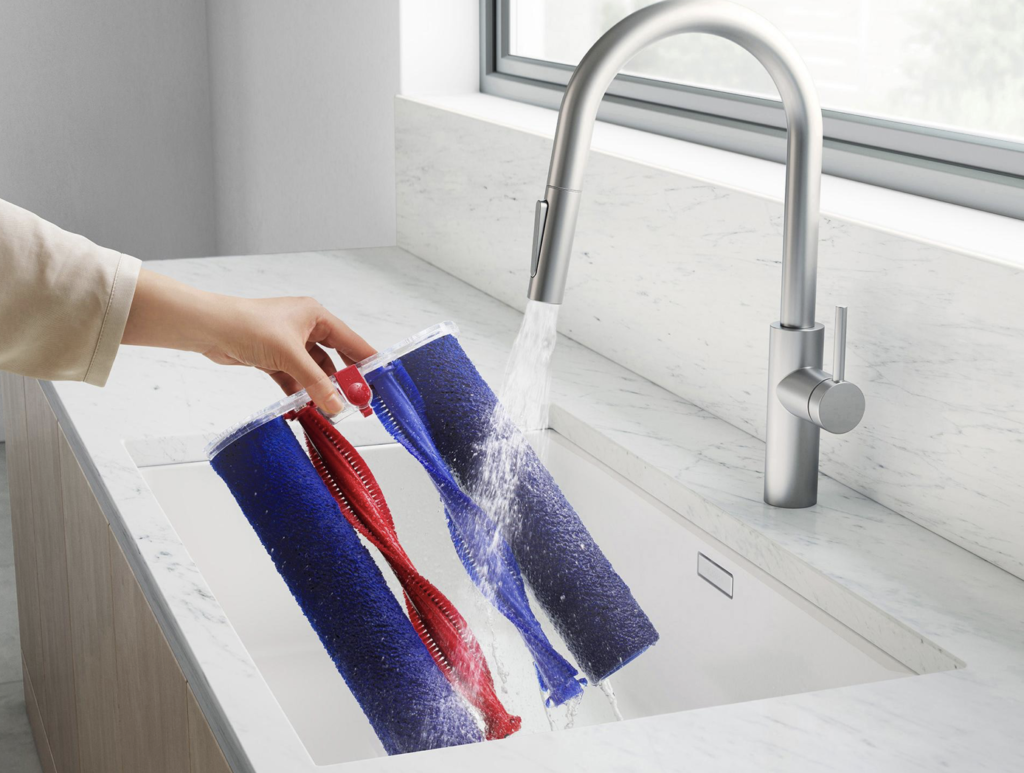
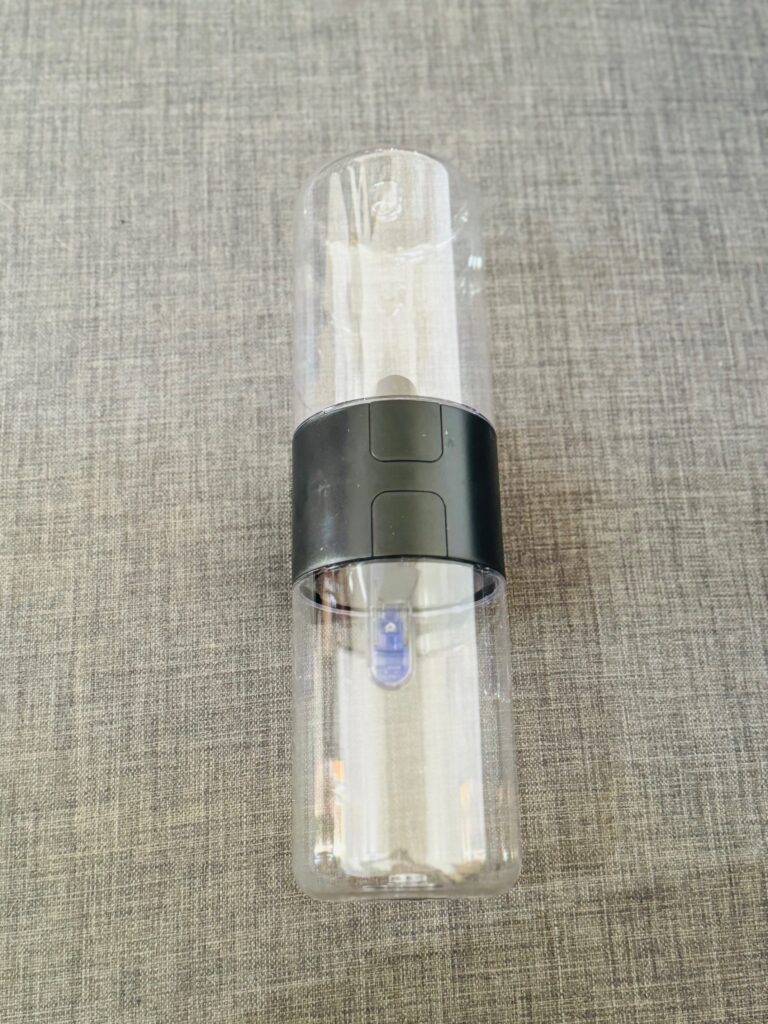
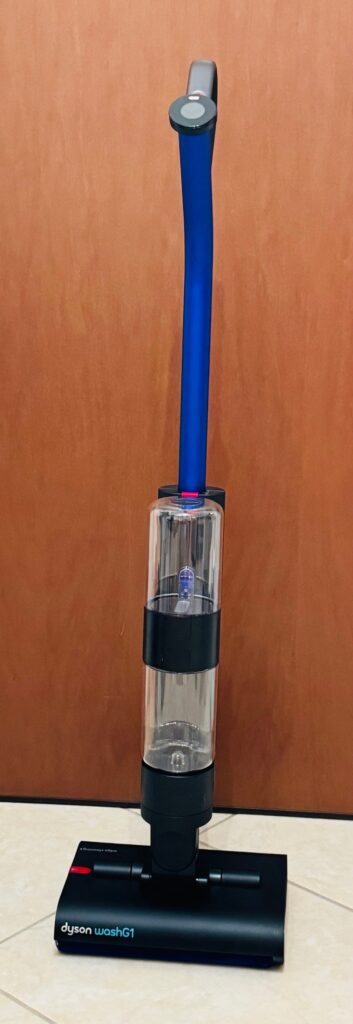
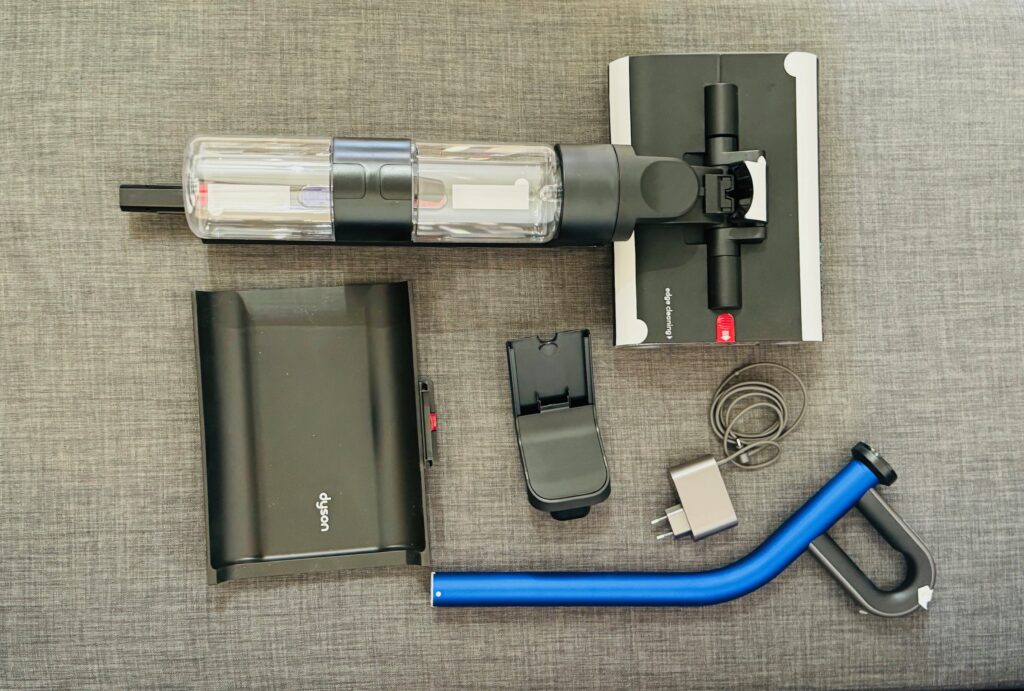
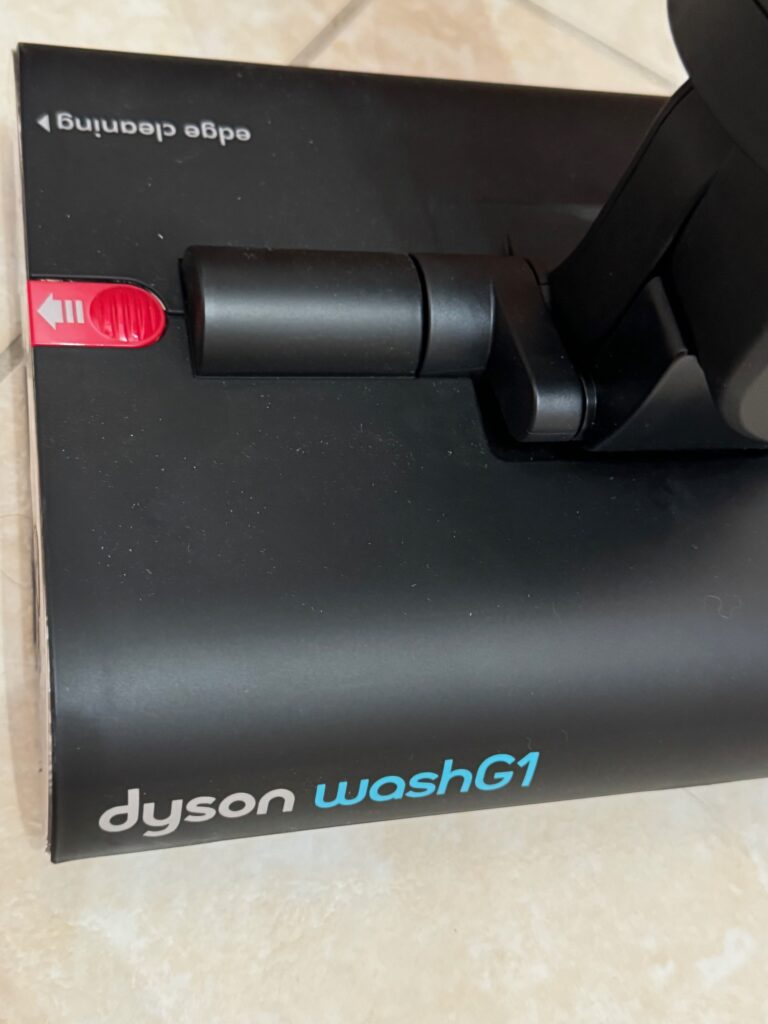
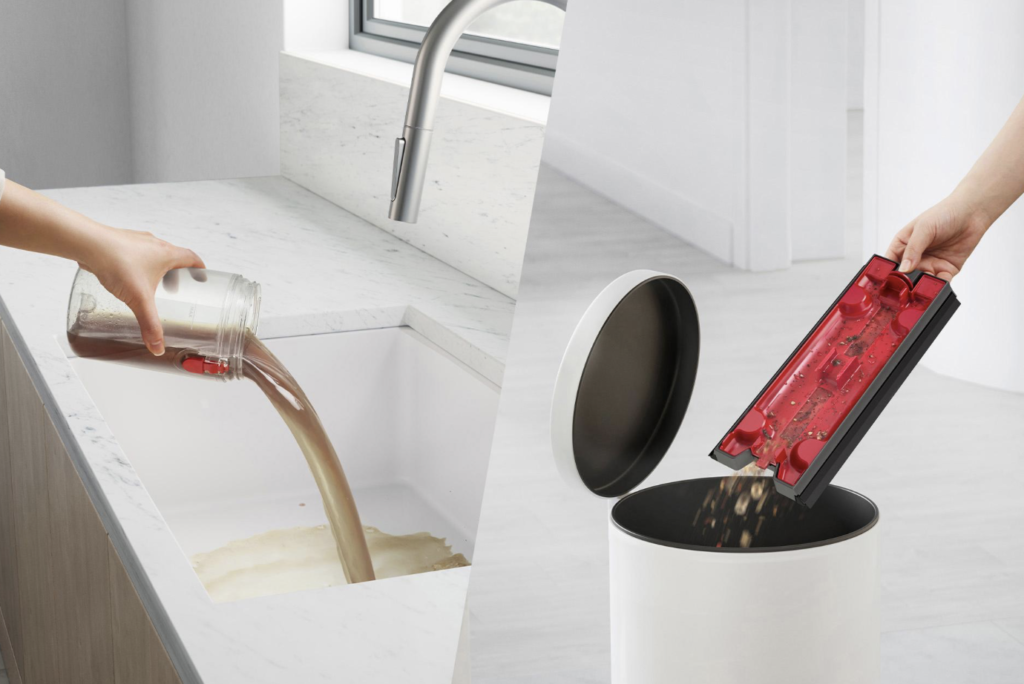
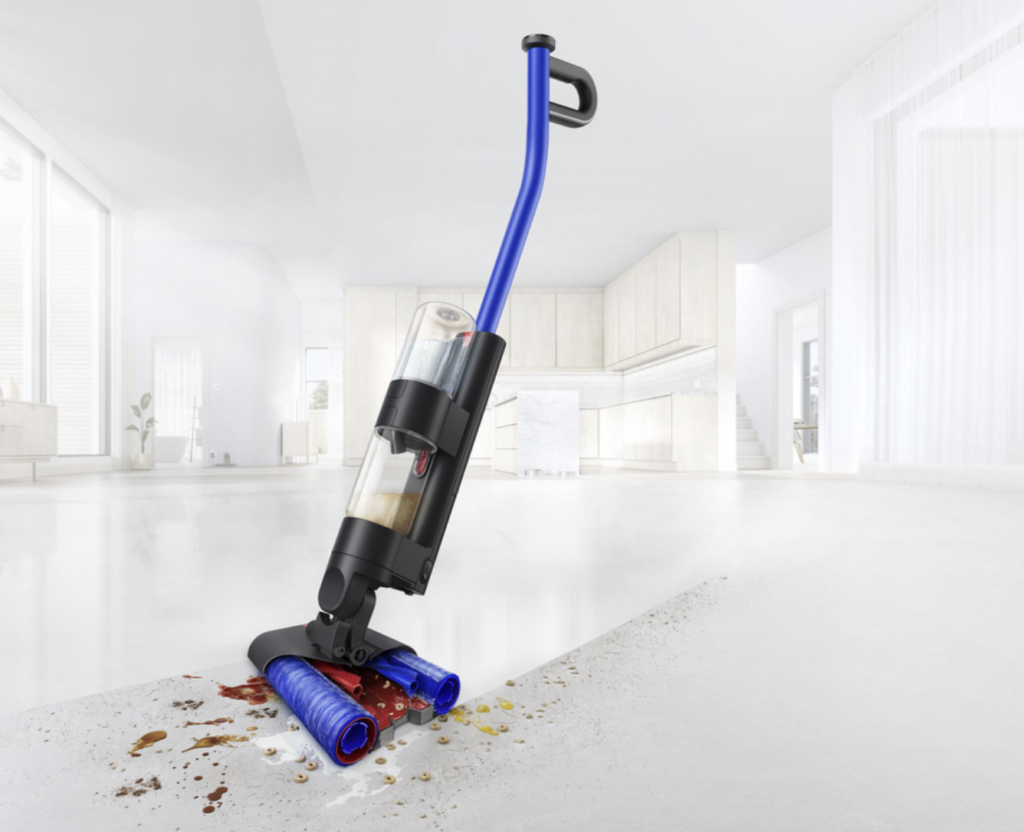
Power and user-friendliness
It is easy to assemble because you must insert the handle on the base, incorporate the brush, and add the tanks. Wash G1 allows you to wash your home floors in a single session, lasting a maximum of 35 minutes. During the wash, the clean water in the first 1-litre tank gradually decreases, while the underlying 0.8-litre tank fills with dirty water. As with other Dyson devices, before you start, it is advisable to open the MyDyson app to add the device, understand how to use it, and get information on its functions.
There is a small LCD at the top of the handle to manage the device. This allows you to select the cleaning mode and buy the rollers when they have finished their life cycle, which hovers around 6 months, although it depends on the amount and manner of washing done.
Wash G1 offers three hydration modes (low, medium, and high), which can be chosen according to the size and type of surface and the dirt to be removed. In the event of a disaster on the floor and stubborn stains, there is the Max mode, which turbocharges the device but greatly reduces its autonomy. Crumbs, crackers, sauce, oil, and yoghurt stains were removed quite easily during the washes I did, and I only had to resort to the Max level once also because the brush is wide and reaches well into the edges and corners.
The effectiveness of the Wash G1 lies in the movement of the two counter-rotating microfibre rollers, to which the distribution of water is added via 26 dispensing points. In this way, the device does not lose water, while the 64,800 filaments per square centimetre of the rollers remove dry dirt and hairs.
Solid dirt tray and self-cleaning cycle
It was clever to place the solid waste tray under the brush, which allows dirt to be disposed of without coming into contact with the hands. Once dirt has been removed from the brush, all that is needed is to shake the long, narrow tray on the basket to slide the waste away. Then, it must be rinsed and put back into its slot.
Once washing is complete, the two tanks should also be emptied, one to remove the dirt and the other to refill with cold water before the self-cleaning cycle, which Dyson suggests should be done after every wash. At the same time, after every 4-5 washes, it is advisable to thoroughly clean the Wash G1, unhooking the removable parts, which should be cleaned with cold water and then put to dry. In contrast to many other models, which dry more quickly in the base of the device.
According to the company, the Wash G1 is a good companion for household cleaning. With a full tank of water, it can wash up to 290 square metres. Beyond the numbers, the tests revealed a device that works well and can be improved in autonomy and drying. Those who want to try it out can buy the Wash G1 for €699 or £599.


